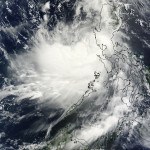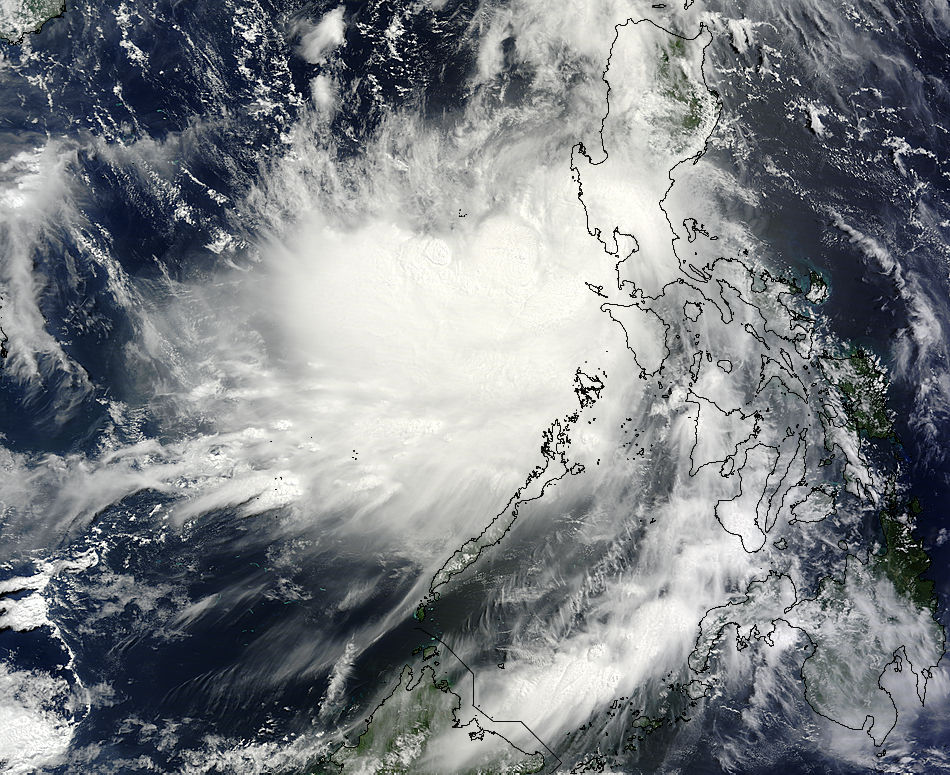The latest edition of the monthly Global Catastrophe Recap, released by Impact Forecasting, report reveals that Super Typhoon Rammasun caused more than $6.5 billion in economic damage. The storm, which made separate landfalls in the Philippines and China, caused widespread damage, killed at least 206 people and injured hundreds more.
In the Philippines, total economic damages across the agriculture and infrastructure sectors were listed at $250 million, while in China, the Ministry of Civil Affairs (MCA) noted that 272,000 homes had been damaged amid total economic losses listed at $6.25 billion.

Image Credit:
NASA Goddard MODIS Rapid Response Team
Additional flood and wind damage from the super typhoon was reported in Vietnam, leading to total economic losses of $6.2 million.
Meanwhile, Typhoon Matmo made separate landfalls in Taiwan and China after first passing by the Philippines, resulting in at least 15 fatalities. In Taiwan, economic losses from the typhoon totaled $20 million, while in China total economic losses were listed at $550 million.
Torrential monsoon rains brought significant flooding across southern China throughout July, leaving 102 people dead or missing. China’s Ministry of Civil Affairs (MCA) noted that a combined 90,000 homes were damaged by the floods, with total economic losses listed at nearly $1.8 billion.
Flooding was also prevalent in parts of Europe during the latter half of the month, with three fatalities reported as thunderstorms and flooding rains impacted Bulgaria, Romania, the Netherlands, the UK, Switzerland, Slovakia, and Croatia. Overall economic losses across the continent were expected to exceed $135 million, and preliminary insured losses were listed at nearly $20 million.
Adam Podlaha, head of Impact Forecasting, said: “Flood is consistently one of the most costly natural perils for insurers, reinsurers and economies worldwide, with three of the past five years experiencing global economic losses from flood that were far higher than the 10-year average of $47 billion. Impact Forecasting has built numerous flood models to quantify clients’ regional exposures to flood risk, with a particular on central and eastern Europe, the U.S. and more recently Asia. An updated version of our U.S. river flood model, which has been well-received by insurers and reinsurers as well as organizations with U.S. infrastructures, will be released in the third quarter this year. Existing and new users of the model will benefit from being able to track the impact of flood risk on their businesses using the latest data and insights.”
Elsewhere, two stretches of severe weather impacted central and eastern sections of the United States during July. The most damaging event stretched from the Rockies to the Northeast and resulted in total economic losses estimated at $350 million and insurance losses in excess of $225 million.
A magnitude-6.9 earthquake struck Mexico’s Chiapas state, near the border of Guatemala, killing nine people, and causing total economic damages in excess of $25 million.
Drought conditions worsened in northern China as economic losses reached $1.4 billion.

Washington’s Carlton Complex Fire became the largest wildfire in state history, killing one person and destroying at least 300 homes.
Source: Aon Benfield
Was this article valuable?
Here are more articles you may enjoy.


 Roof Repair and Replacement Costs up Nearly 30% Since 2022, Report Shows
Roof Repair and Replacement Costs up Nearly 30% Since 2022, Report Shows  Tariff Panic Spurs Fastest Retail Sales Growth in Two Years
Tariff Panic Spurs Fastest Retail Sales Growth in Two Years  In Fight Over Insurance, Neighbors Crowdsource LA Fire Contamination Data
In Fight Over Insurance, Neighbors Crowdsource LA Fire Contamination Data  FEMA Denies Washington State Disaster Relief From Bomb Cyclone, Governor Says
FEMA Denies Washington State Disaster Relief From Bomb Cyclone, Governor Says 